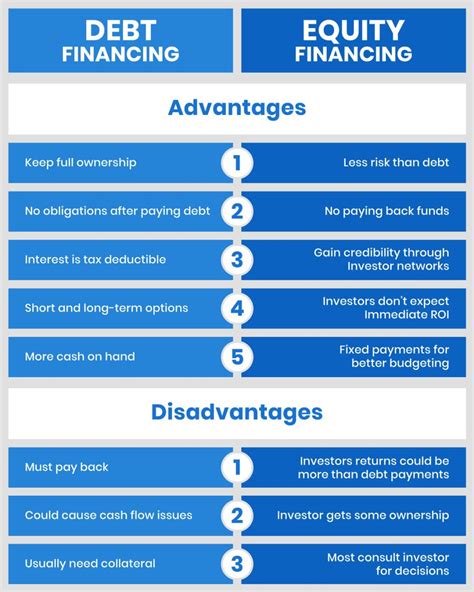Berikut adalah posting blog tentang pembiayaan hutang untuk perusahaan rintisan:
Debt Financing for Startups: A Complete Guide
Securing funding is crucial for any startup's survival and growth. While equity financing – raising capital by selling shares in your company – is a common route, debt financing presents a compelling alternative. This guide will explore debt financing for startups, outlining its benefits, drawbacks, and how to secure it.
What is Debt Financing?
Debt financing involves borrowing money from lenders, such as banks, credit unions, or online lenders. Unlike equity financing, debt financing doesn't dilute your ownership stake. You repay the loan with interest over a predetermined period, retaining complete control of your company. For startups, this can be a crucial advantage, particularly in the early stages where maintaining ownership is paramount.
Types of Debt Financing for Startups
Several debt financing options are available for startups:
- Small Business Loans: Traditional bank loans are a popular choice, often requiring a solid business plan, strong financials, and collateral.
- Lines of Credit: These provide flexible access to funds as needed, often with a revolving credit limit. They offer increased financial flexibility for managing cash flow fluctuations.
- Term Loans: These are lump-sum loans repaid over a fixed period with regular installments. The repayment schedule is predetermined, which provides predictability for budgeting.
- Invoice Financing: This involves borrowing against outstanding invoices, providing quick access to capital based on your anticipated receivables. This can be a lifeline for businesses facing delays in payments.
- Merchant Cash Advances: These are short-term loans based on your credit card sales, often repaid through a percentage of daily sales. They can provide rapid funding but usually come with higher fees.
- Venture Debt: A specialized form of debt financing designed for high-growth startups, often provided by venture capital firms or specialized lenders. It bridges the gap between equity funding rounds.
Advantages of Debt Financing for Startups
Debt financing offers several significant advantages:
- Retain Ownership: You don't relinquish equity in your company. This is a major advantage, particularly for founders who value maintaining control.
- Tax Deductibility: Interest payments on business loans are typically tax-deductible, reducing your overall tax burden.
- Predictable Repayment: The terms of the loan are clearly defined, providing a predictable financial structure and simplifying budgeting.
- Faster Funding: Depending on the lender and the type of loan, obtaining debt financing can often be faster than securing equity investment.
Disadvantages of Debt Financing for Startups
While attractive, debt financing also presents some drawbacks:
- Personal Liability: Depending on the loan type and your business structure, you may be personally liable for the debt. This means your personal assets are at risk.
- Interest Payments: You'll need to repay the principal and interest, increasing your overall cost. Managing these payments can strain your cash flow.
- Collateral Requirements: Lenders often require collateral, which could be assets like equipment, property, or inventory. Failure to repay may result in the loss of those assets.
- Stricter Qualification Requirements: Securing debt financing often requires a strong credit history and a well-developed business plan. Meeting lender requirements can be challenging for startups.
How to Secure Debt Financing
The process of securing debt financing involves several key steps:
- Develop a Strong Business Plan: A comprehensive plan detailing your business model, market analysis, and financial projections is crucial.
- Assess Your Financial Situation: Analyze your financials to determine how much you need to borrow and your repayment capacity.
- Explore Funding Options: Investigate the various types of debt financing and choose the best fit for your business needs and risk tolerance.
- Prepare Your Application: Gather all necessary documents, including financial statements, tax returns, and business permits.
- Negotiate Terms: Carefully review the loan agreement, and negotiate favorable terms regarding interest rates, repayment schedules, and other conditions.
Conclusion
Debt financing offers a viable path to funding for startups. Carefully weighing the advantages and disadvantages, understanding the various options, and meticulously preparing your application are critical for success. Remember to consult with financial advisors and legal professionals to navigate this process effectively. Choosing the right debt financing strategy can significantly impact your startup's trajectory, leading to sustainable growth and long-term success.
